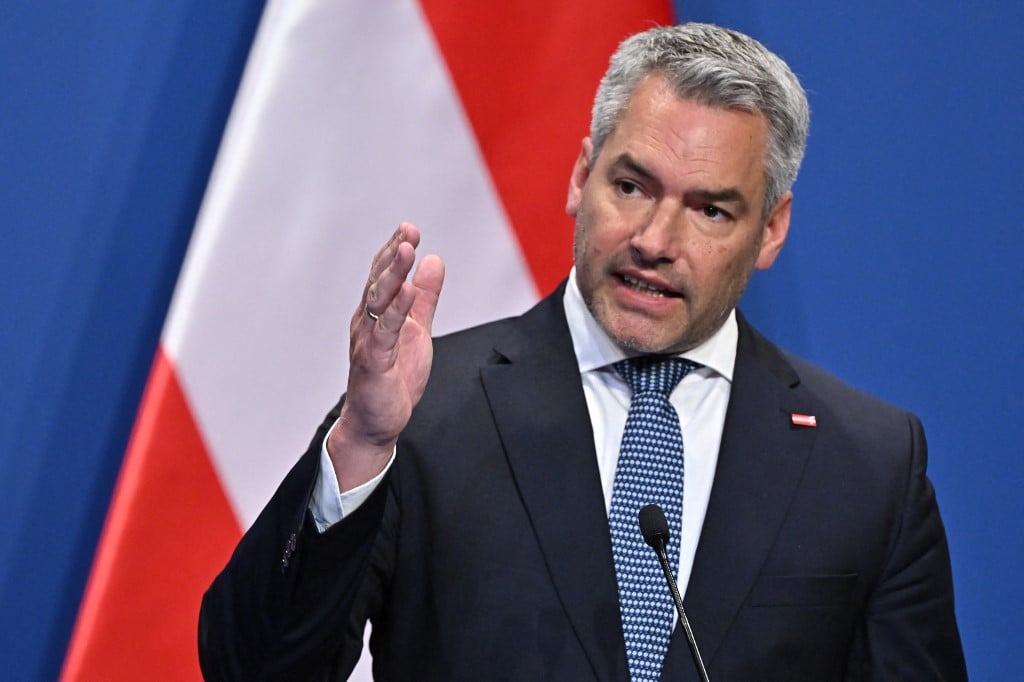Why is a rent brake coming?
The coalition government – made up of the Austrian People’s Party (ÖVP) and the Greens – has proposed a three-year rent brake that would take effect from 2024.
The move is due to the sharp increase in rents that people in Austria have been forced to deal with, alongside soaring inflation.
As of April, the guideline or reference rates, which are adjusted to inflation by the Justice Ministry, for flats in older buildings had risen in cost by 8.6 percent. Category rents, which are levied in Austria for leases concluded between 1982 and the end of February 1994 and are linked to inflation, last rose by 5.5 percent in August. And in new buildings, where rental contracts are usually also linked to inflation, rents have increased fourfold.
READ ALSO: Austria to introduce nationwide rent brake.
How will the rent brake work?
Under the plans, for the next three years (from the start of 2024 to the end of 2026), the rise in rents is to be limited to five percent per year as opposed to the 15 percent forecast by Chancellor Karl Nehammer (ÖVP).
After that, a one-time rent increase per year will be allowed – to the extent of the average value of the inflation of the last three years. This is to smooth out any outliers and prevent extreme rent increases in the future.
The measure for the next three years will first affect category rents. The category amounts are hiked up when the inflation rate exceeds the five percent mark (since the last increase).
Recently there were very high rent increases in certain non-profit housing complexes due to the sharp rise in interest rates. There are reportedly plans to prevent this in future – by intervening in the Non-Profit Housing Act (Wohnungsgemeinnützigkeitsgesetz or WGG).
In the case of the guideline/reference rents, the next increase, which is planned for April 2025, should be limited to a maximum of five percent, under the government’s plans. A rent increase of a maximum of five percent will be possible again the following year, 2026, because the model will be changed to an annual one. From 2027, the average value of the last three years will then be used to calculate the next hike.
So will the guideline rents be increased annually from now on?
At first, no; it will remain at the two-year rhythm until 2025. After that, it will change to an annual increase.
KEY POINTS: How will Austria’s new cost of living measures affect you?
Will all flat contracts be covered by the cap?
No. The proposed rent brake covers rented accommodation built before 1953. It also applies to subsidised and social housing, no matter when it was built.
The government expects around 1.2 million rental contracts in Austria will be covered by the rent brake. That’s around 75 percent of all leases.

Privately financed new buildings are not covered – which is bad news for many tenants in new builds whose rents have been hiked up several times recently.
The government is said to be looking at ways to extend the measure to the other 25 percent of Austrian leases.
For the moment, it’s only the guideline and category rents, which are paid by tenants who live in an older building (known as an Altbau in Austria) and in some municipal buildings, as well as the rents in cooperative flats that are being capped.
The guideline value varies from province to province. It was last increased in April and is currently 6.67 euros per square metre in Vienna – but there are also various surcharges and deductions. About 776,000 people are affected by an increase of the guideline rents.
Category rents are only a marginal phenomenon on the rental market, with around 230,000 people living in these tenancies. They are paid if the tenancy agreement was signed between 1982 and February 1994, and are currently 4.47 euros per square metre in category A.
Cooperative rents have to cover costs and therefore differ according to production costs and running costs. However, they are significantly cheaper than market rents and are also linked to inflation.
About 49 percent of the Austrian population rent their home, i.e. about 4.4 million people. About one million have tenancies where guideline or category rents apply.
In newly built flats, landlords can set the rent level as they wish. In the vast majority of tenancy agreements in new buildings there is also an indexation clause linking the rent to the consumer price index (CPI).
Have rent increases really been that bad in Austria?
As we mentioned, under normal circumstances the guideline rent values are increased every two years. Due to the pandemic, however, the rise was suspended in 2021 and did not take place again until 2022. One year later, in April of this year, the guideline values were increased again – by a hefty 8.6 percent due to inflation. On average, everyone who pays guideline rent has to pay about €500 extra per year in rent. With the increase from 2022, the guideline rents are therefore 15 percent more expensive than two years ago.
The category rents are also linked to the inflation rate; here, rents increase if a five-percent hurdle is exceeded. This was the case again in July – and thus for the fourth time in the last one and a half years. Overall, category rents have risen by almost a quarter since then.
On the whole, rents in Austria rose about 7.8 percent between July 2022 and July 2023.
What can I do if I can no longer afford my rent?
Since the beginning of the year, social organisations have reported a rush of people who can no longer afford their housing costs.
Financial support can be provided by housing and rent subsidies, depending on the province. Some municipalities also offer additional housing subsidies. In Vienna, the new programme Wiener Wohnungssicherung Plus (Vienna Housing Security Plus) is being introduced this autumn.
Organisations such as Volkshilfe, Caritas and the Chamber of Labour also offer counselling sessions. They have an overview of other funding channels that can be tapped into.
READ ALSO: Vienna social housing tenants to get rent relief
What has the government done so far to combat rising rents?
Critics think: not very much. In view of the rising guideline rents, there were negotiations in the government in the spring about a rent cap, but that didn’t come to anything.
Instead, in March a housing cost subsidy of €225 million in additional rent and heating cost subsidies for low-income households was passed. The federal government’s support for covering rent arrears, which was set up during the pandemic, was also increased several times and extended to cover arrears in energy and operating costs.
Meanwhile, opposition parties in Austria have been calling for further action.
The Social Democrats (SPÖ), for instance, have called for a complete freeze on rents over a three year period, rather than the five percent annual increase that the government’s planned rent brake law will allow.




 Please whitelist us to continue reading.
Please whitelist us to continue reading.
Member comments